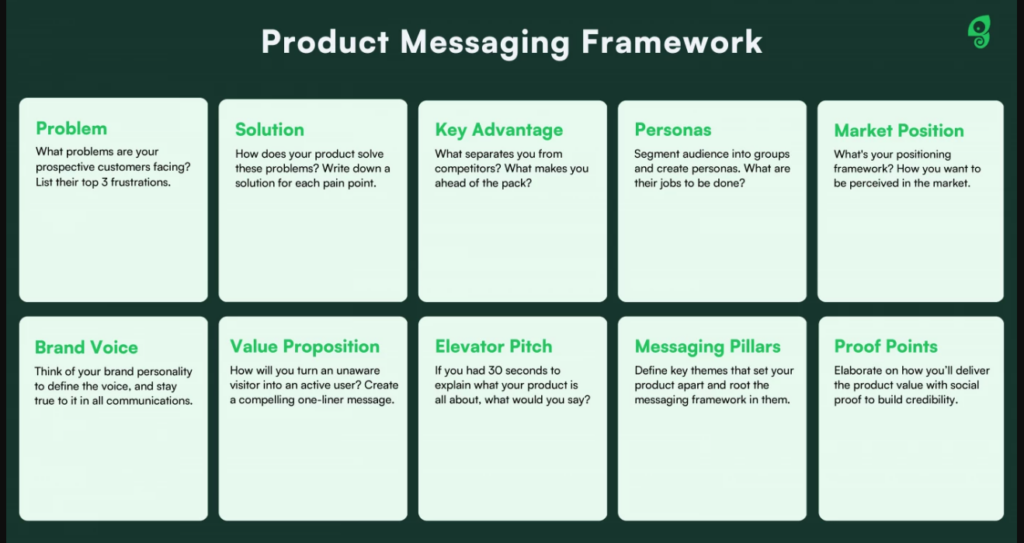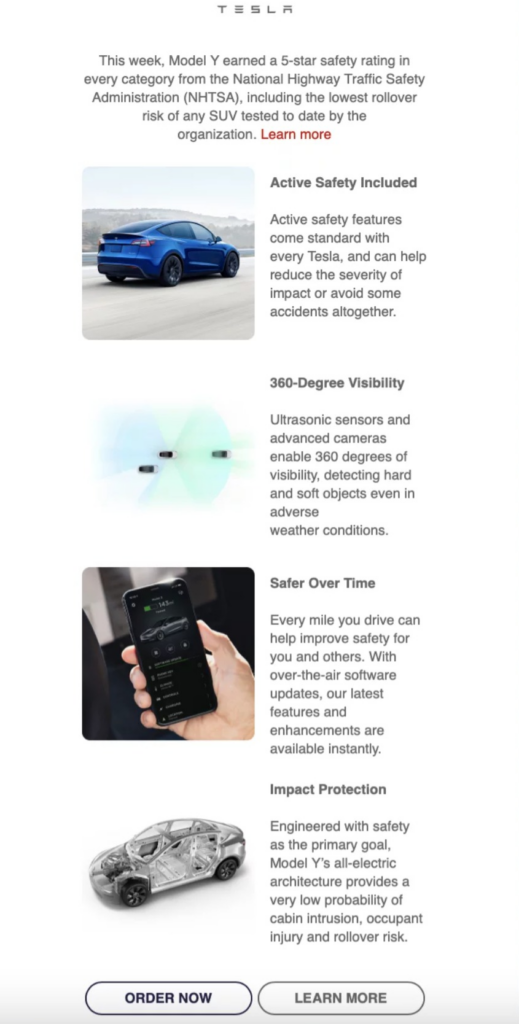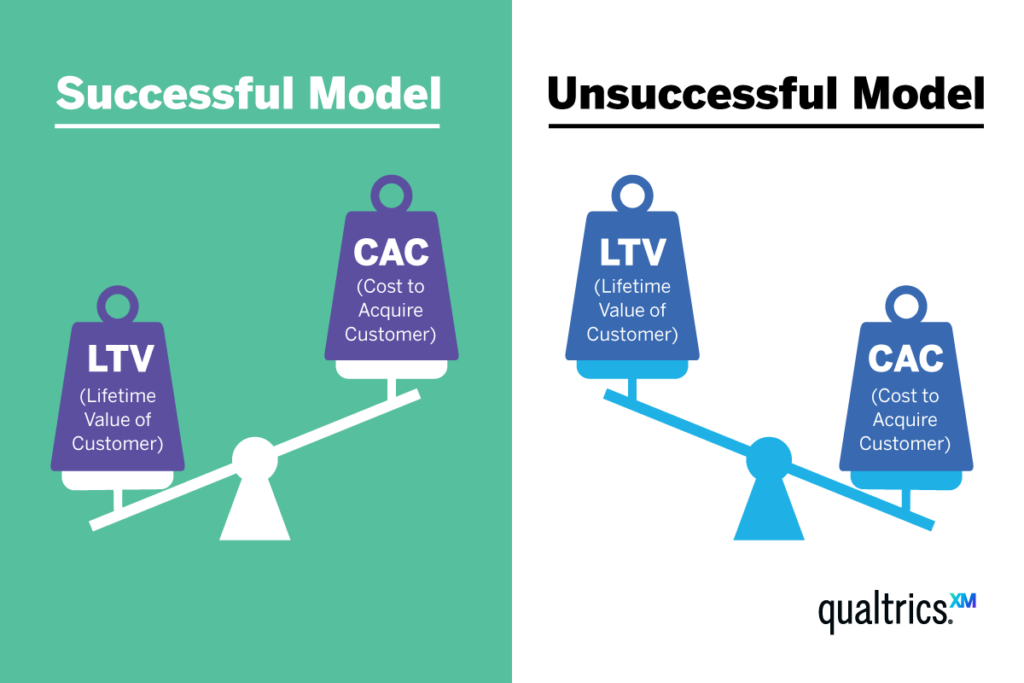New product launch failure rate is quite high. A study reported that 25% of new SKUs are no longer available for sale after the first year of launch and up to 40% are not purchased after 2 years. Another study reported a failure rate of new products as much as 95%.
What goes wrong?
Possibly anything from low capital to poor market fit to low-quality product.
The analysis of the successful products reveals that a robust new product marketing strategy is one of the best ways to overcome most of these challenges leading to a high success rate.
The following 6-step to new product marketing strategy is a proven methodology for exceptional growth. Let’s get rolling:
Step #1: Define Target Audience
Who is your primary target audience?
Defining your ideal customers and having in-depth knowledge about them is the first (and the most important) step in the development of a robust marketing strategy for a new product.

You need to conduct market research by collecting primary and secondary data about your ideal customers. It helps you in multiple ways including:
- Validating product idea and its demand
- Timely, data-driven product tweaks based on feedback
- Development of buyer personas for marketing.
A study reported that 65% of customers want businesses to adapt to their needs and preferences, while 61% of customers say that most businesses don’t understand them and rather consider them as a number.
When you fail to understand the needs of your customers, you’ll start losing them. As much as 68% of customers leave brands that fail to understand their needs:

The best (and only) way to understand your customers and their needs is through market research driven by primary (and secondary) data collection. You need to use this data to create buyer personas that’ll help you understand your customer needs, interests, and preferences.
Buyer Persona Development
A buyer persona, as I have already explained in this article, is a semi-fictional representation of your ideal customers. You need to convert each distinct target market into a persona.

For example, if you own an ecommerce store and target both men’s and women’s apparel. You need to create multiple buyer personas for both men and women such as:
- A persona that represents executives who need formal wear
- Persona for men’s sports
- Persona for men’s casual wear
And so on.
You need to convert your audience into distinct target groups with similar needs and then create a persona for each. Data and your product will guide you on the number of personas you have to create.
The best way to collect data for persona development is to conduct interviews and surveys. It’ll help you identify:
- Pain points
- Interests and preferences
- Demographics
- Psychographic traits
- Goals and motivation.
Adding these details to personas will give you a complete picture of who your ideal customers are, what they need, and what price they can afford. It helps you understand and meet customer expectations right from day one leading to an effective new product marketing strategy.
Step #2: Product Positioning and Messaging
Product positioning and messaging of the new product are essential elements of marketing success.
Product positioning refers to your product’s position in the existing market among competitors and how your product is unique. It develops and shapes the perception of your audience and market about your product. The positioning is communicated to the ideal customers through messaging:

Positioning is for internal use that consists of beliefs, values, philosophy, etc. in a written form while product messaging is the external transition of positioning for marketing use.
Setting Product Positioning
Having a clear and solid positioning for your product is a critical step. It is used as a foundation for messaging that’s used across your marketing collateral.
The best approach to setting positioning is using the four Ps technique:

It consists of:
- Product: What makes your product unique from its competition?
- Price: Does your price justify the value it delivers to your audience and is your audience willing to buy your product at this price range?
- Place: Where and how your products are available for sale?
- Promotion: What marketing techniques do you use to reach your customers?
These 4 Ps set your positioning and help you develop the right mindset and customer perception of your product. You need to clearly define these 4 Ps to set clear positioning for your product. It is a formal document that’s shared across all teams.
Once you have the positioning document ready, it should answer all the following questions:
- Your product’s unique selling proposition and what makes it different from the rest
- The price range of the product and what message you intend to convey to your target audience through pricing (More on this in Step 4)
- The primary sales channels for your product and what touchpoints you should avoid to maintain the right customer perception and expectation
- Marketing techniques to use to enforce product positioning.
You need to have a clearly defined positioning statement that becomes the face of your product. It is different from your brand statement which covers your entire brand. A positioning statement is specific to your product and is used externally – unlike a product positioning document that’s used internally.
Here’s how to write a compelling product positioning statement:

When you practically implement and follow product positioning document and statement, you execute product messaging. Price, place, and promotion in the 4 Ps above are part of the product messaging that are derived from the product itself.
Enforce Positioning in Product Messaging
Having a document isn’t just enough, it should be followed by everyone in your organization and that’s how you convert positioning into messaging and deliver it to your audience. Messaging is a continuous process that keeps evolving.
Here’s a comprehensive framework for product messaging:

Bellroy knows its audience that it needs lightweight, small-sized products for daily use and that’s what it highlighted in its messaging:

Similarly, Tesla targets a persona that’s specifically interested in safety features:

Accurate messaging is essential for new product marketing as it sets the tone. You need to tell your target audience what features your product offers and how it’s different from the rest. Successfully converting positioning into messaging is crucial for marketing success.
Product messaging should have the following components and characteristics:
- Unique selling proposition (USP)
- Your target audience or buyer persona
- Branding
- Clarity and authority
- Brand pillars
- Positioning statement (see above)
- Right tone and voice.
Nothing to panic as creating messaging is easy. You need to follow a template and you’ll be all set. Download product messaging templates here and here, and start experimenting with them.
Step#3: Set Goals
Setting clear, actionable goals for product marketing significantly improves the probability of success. Goals tell you what you want to achieve and how to track performance.
Most new product marketing strategies are focused on either generating sales or boosting brand awareness so your primary goal would be to generate sales for new products. You need to refine and tweak the goal to make it SMART.
A SMART is a goal-setting framework that helps you develop specific, measurable, achievable, relevant, and time-bound. This type of goal has all the ingredients that your team needs to make sense of it.

Here’s how a SMART goal should look like:

Research shows that SMART goals make it easy for businesses to reach their goals. This is because these goals are highly focused and measurable.

It is important to write down your SMART goal as 76% of businesses that write their goals and share them with the teams achieve their goals successfully as opposed to their counterparts.
So, you need to create a clear, crisp marketing goal for a new product using the SMART framework, write it down, and share it with your marketing and sales team. You can choose a single goal or create multiple ones for different teams.
Here’s a list of some SMART goals for a new product marketing strategy. Pick one or more and tweak as needed:
- To generate 500 sales in 2 months after the product launch through paid ads (or any other marketing channel of your choice)
- To generate 1,000 leads in 100 days for our new product through cold email marketing
- To acquire 200 new subscribers during pre launch of our app from social media
- To drive 5,000 monthly organic visitors to our website in 12 months after product launch.
Step #4: Set Price
Setting the price of a new product isn’t the job of the marketing team, but it requires input from the marketing team especially when you are working towards a new product marketing strategy.
You should consider an ideal price for a launch campaign that’ll set the perception.
Product pricing is complicated and never a straightforward process. Yet, it’s the most important success factor. Low pricing might bring in sales but it might create a negative perception of your new product and customers might perceive it to be inferior. On the contrary, high price might turn away customers as they might perceive it to be overpriced.
So, how do you begin?
There are multiple ways to set the accurate price for a new product:
- Value-based pricing: The price of the product is determined by its perceived value. You set a price that your ideal customers are willing to pay and perceive it to be fair.
- Competitive pricing: Also known as competition-based pricing refers to setting your product price based on the prices of similar products. It helps you gain a competitive advantage by offering your new product at the same price as that of your competitors.
- Penetration: Also known as market penetration pricing is when you set a lower price than your competitors to penetrate the market and gain market share.
- Market skimming: Also known as skim pricing refers to setting a high initial price for a new product to generate maximum revenue. You can then later lower the price. It works best when you are the first-mover in the niche or you are introducing a better product than competitors with exclusive features.
- Cost-plus: You set a fixed percentage to the cost of the product as your margin. This strategy helps you earn a specific profit per product.
- Dynamic: With a dynamic pricing strategy, the price changes depending on the customer, market, and other factors. It is an agile approach to marketing where there is no standard price for the product.
Value-Based Pricing
Your best bet for a new product is to go with value-based or competitor-based pricing models. Other pricing strategies aren’t too attractive for new products.
Value-based price should be your top preference as it lets you set a value-driven price that your customers are willing to pay. You can get a much higher margin than other pricing strategies such as cost-plus:

Competitive pricing, on the other hand, might devalue your product as customers will consider it to be of the same value (due to similar prices). Consequently, customers don’t get the actual value your product offers and might never switch to your new product.
Getting started with value-based pricing is, somewhat, challenging as it is a data-driven pricing technique. You need to reach out to your customers and find out what price they are willing to pay for your product.

Here’s a 4-step process to setting accurate value-based price:
- Estimate customer perceived value through data. You can collect pricing data in Step #1 instead of doing it separately
- Decide price range based on customer feedback and data
- Run experiments to understand how customers value your product. This requires giving away free samples of the product to selected customers
- Set the actual price.
You can decide to lower the price or offer a discount for new product marketing. This will help you generate initial buzz and grow your customer base quickly.
Step #5: Launch Your Product
Product launch is the most essential part of a new product marketing strategy. You need to develop your marketing plan before the product launch. And your plan depends on how you want to launch your product.
- Soft launch: It is used to test product-market fit and is often a screening step. You launch your product to a small portion of your target market. For example, when you launch a product to collect feedback on pricing and value, it’s a soft launch.
- Pre-launch: It is a marketing approach to developing interest in your product before its launch. You create hype through social media and your website about your product and offer pre-launch discounts to potential customers.
- Launch to new customers: When you launch a new product to a new audience in a new or an existing market, it requires massive brand awareness campaigns. The marketing techniques used in this case are geared toward customer acquisition targeting top of the funnel users.
- Launch to existing customers: You might launch a product to an existing customer base either as a standalone new product, an upgrade to an existing product or cross-sell. In this case, marketing gets easier and you target the bottom of the funnel customers with email marketing.
- General availability launch: When you launch your product to your entire customer base irrespective of whether they are new or existing customers.
Pre-Launch

The perfect way to launch a new product is via a pre-launch campaign. It is used to create interest in your product leading to high sales on the launch date. It’s a popular technique used extensively by brands of all sizes.
Robinhood, a stock-trading app, gained over a million users before the app launch through a pre-launch campaign. Here’s how its pre-launch website looked like:

Users were offered priority access when they shared links with their friends and family:

A pre-launch campaign like this needs a rigorous marketing plan because you have to convince users that your new product is the best in the market. This is another reason why value-based pricing works best because pre-launch is value-driven.
Here’s how to create your pre-launch campaign:
- Create multiple opt-in forms and landing pages at least one per buyer persona
- Describe the benefits and value of your product
- Promote your pre-launch campaign on social media and other marketing channels
- Run quizzes, teaser emails, and product demo videos to build interest in your product
- Reduce hurdles and keep sign-up as easy as possible. Only collect email addresses to increase conversions
- Run a pre-launch campaign for at least a month with a clear goal of reaching a specific number of subscribers.
Not all subscribers will become customers so make sure you plan subscribers accordingly. The bigger the list, the better.
Step #6: Track and Tweak
Performance tracking and tweaking your marketing strategy after product launch will keep you on the right track. Your job gets tougher after the product launch.
The good thing is that you have access to data after the product launch which makes it easier to make informed decisions. You can figure out what product features customers love the most and why and which persona converts the best.
The key metrics and KPIs to monitor include:
- Conversion rate: Calculate the conversion rate for each persona and the different market channels you have used. It’ll help you identify what personas and marketing channels perform the best so you can channelize the marketing budget accordingly. Calculate the conversion rate by dividing total conversions by the number of total visitors or interactions for the same page and multiplying the answer by 100 to convert it into a percentage.
- Market penetration rate: It tracks the performance of your marketing strategy. Calculate it by dividing the total customers by the total size of your target market and multiply it by 100 to convert it into a percentage. On average, a market penetration rate of 10% is considered profitable.
- Customer satisfaction: Figure out how satisfied your customers are and how likely they are to recommend your product or brand to their friends. You can use metrics like Customer satisfaction score (CSAT) and Net Promoter Score (NPS) to measure customer satisfaction. These are survey-based metrics that you can use on your website or in email to collect feedback from your customers.
- Customer lifetime value: It measures the total revenue by a customer with your business for life. It measures how valuable a customer is for your company. You might not be able to track it initially as it requires an average customer lifespan which is the difference between a customer’s first and last purchase with your company. When customers churn, you can find out customer lifetime value using this formula and then compare it with customer acquisition cost to understand how much you make per customer as opposed to the cost you incur to acquire a customer.
How you interpret these metrics and what decisions you take decide the fate of your product and its marketing. Simply tracking and reporting metrics isn’t enough. You have to refine your strategy based on data.
For example, data shows that you have a high customer acquisition cost and a low customer lifetime value which means you have an imbalanced business model:

What steps you take to fix this issue is important. Here are a few possible options:
- Increase product price
- Reduce marketing cost
- Change marketing channels
- Offer discounts on cross-sells and upsells to the customers
- Run an engagement campaign.
What’s the right choice?
The data will tell you.
See what’s causing this imbalance and take the necessary steps to fix it. If the marketing cost is too high, consider optimizing it. If you are paying too much to acquire a customer, consider changing the marketing channel. Or, if you have a high churn rate with low repeat purchases, run a survey to find out why customers don’t buy again.
The data has the answer.
Find it, tweak, and repeat.
Conclusion
New product marketing strategy development and execution is a challenging task. The 6-step process covered in this article will help you launch a product successfully in any market and niche.
These steps require you to make a lot of decisions such as pricing strategy, product positioning, marketing goals, and others. Instead of using your gut feeling or judgment, it is recommended to use data.
Collect and analyze as much data as you can as it’ll never disappoint you.
Featured Image: Pexels



